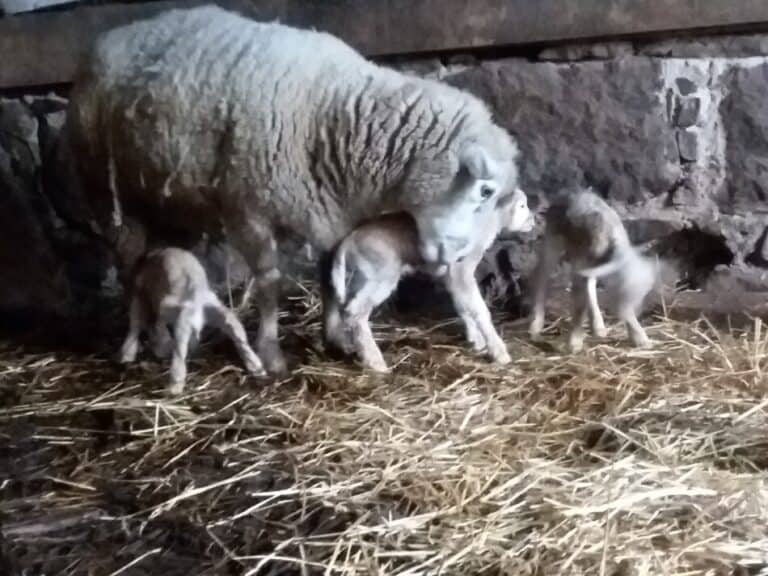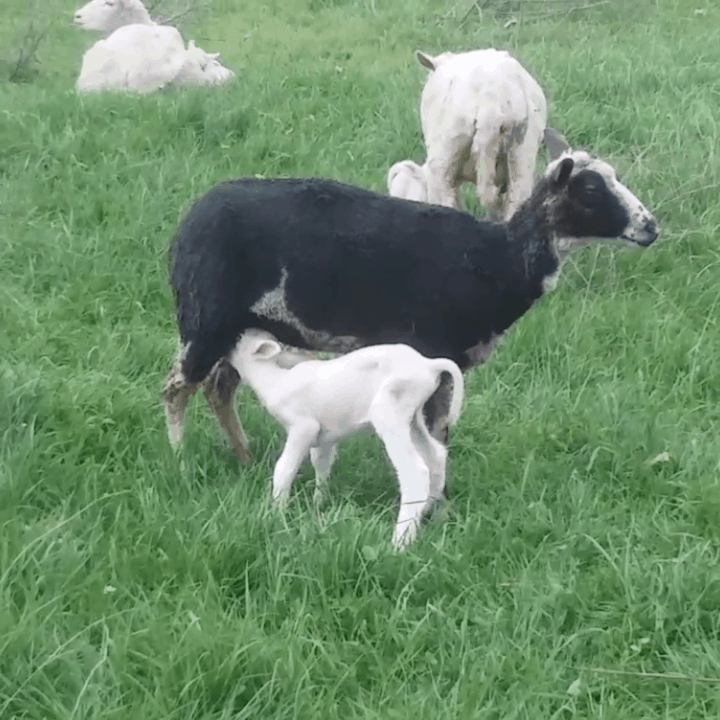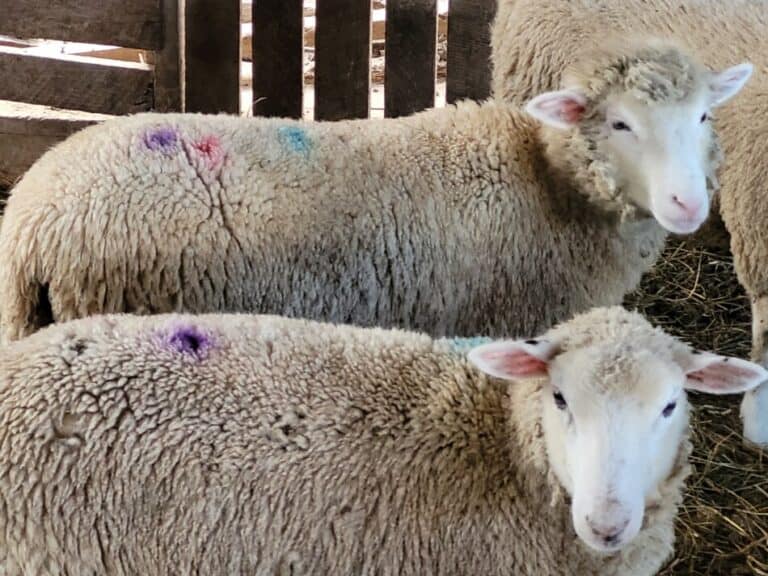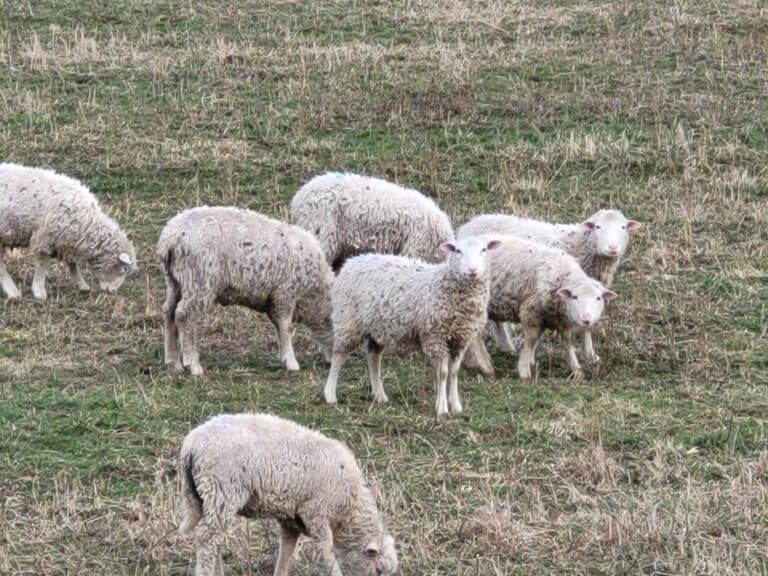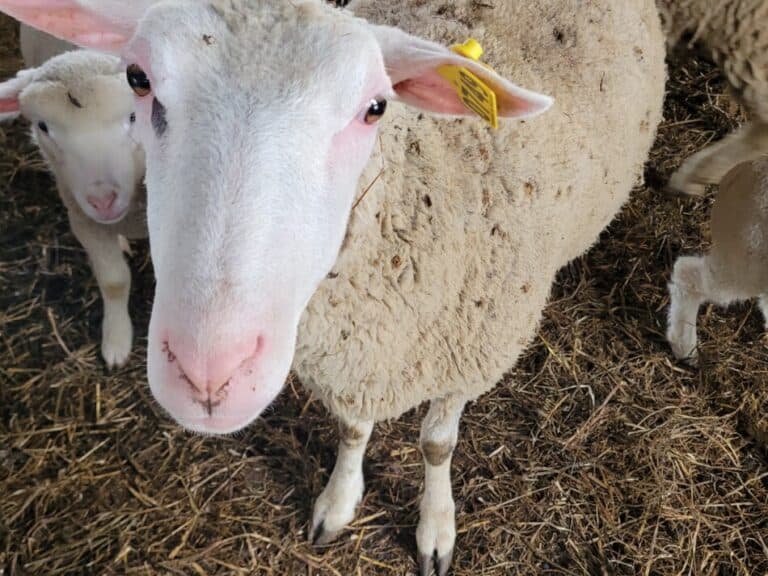What Does It Cost To Maintain A Sheep?
Once you have decided to buy a small flock of sheep, the next thing to consider is daily expenses like hay and other occasional care, like deworming or vet care.
What will your costs be to maintain and care for your sheep once you have them?
We’ll walk through the costs you can expect to have while keeping sheep and I’ll show you how to figure up a fairly close budget based on what you can expect to pay for feed and supplies in your area.
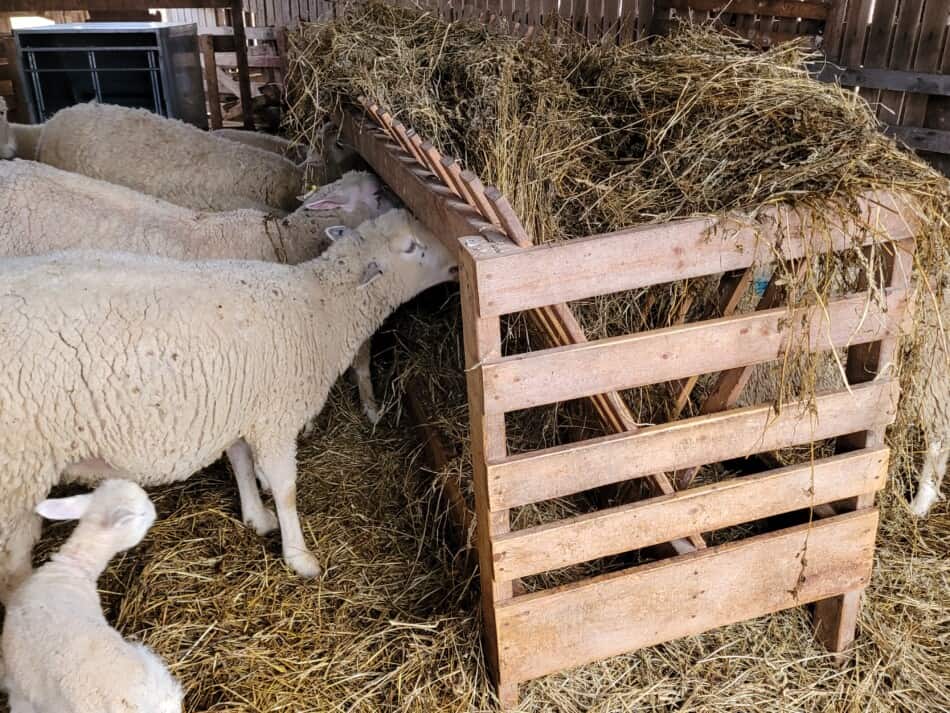
Feed costs for your sheep
The first cost most folks think of for maintaining a sheep will be feed costs.
Since sheep eat mostly forages, like grass or hay, we need to figure up their daily consumption and see what that will cost. Since hay is a bit easier to measure than grass, we’ll go with hay.
Keep in mind, the only way to really figure this out is backwards, meaning you keep track of what your sheep are eating then do the math on what you actually fed them.
Anything that is planning what the flock needs is just a guess, based on weight and reproductive cycle. You can get really good with your guesstimating, but consider it just a best guess until you have some solid numbers on what works for your sheep on your feed.
Figure the hay needed per sheep per day
An easy way to figure the maintenance forage needed for your sheep is 3.5% of the sheep’s bodyweight per day in hay.
This means that if your sheep weighs 100 pounds, it needs 3.5 pounds of hay per day.
Most adult sheep would weigh more than 100 pounds, probably closer to the range of 130-150+ and would need something like 4.5-5.25 pounds of hay per day.
Keep in mind that these are rough figures, the exacts depend upon the condition of your sheep, the nutritional value of the hay and other factors like parasite load or if they are growing or gestating.
So, what does this 3.5% thing do for you? It gives you a place to start and adjust from there. We’ll work out a few examples and you’ll be able to do the figures for your sheep.
7 Tips To Help You Choose High Quality Hay shows you what to look for in hay you are buying for your flock.
An example figuring pounds of hay per day per sheep:
Let’s say you have 3 sheep that you feel weigh 130 pounds each. These sheep need 4.5 pounds of hay per day, which we’ll round up to 5 to keep things simple.
5 pounds of hay per sheep x three sheep = 15 pounds of hay per day for your flock
If you are feeding a 45 pound bale, this bale will last your sheep for three days if they are eating only hay. This would be 10 bales per month and 60 bales for six months of hay only feeding.
On to the cost, let’s say your 45 pound bale costs $8 each, which is $360 per ton. One bale lasts your sheep three days, so $8 divided by three days is $2.6 per day, which is $0.89 per day per sheep.
This means that each sheep that is eating 5 pounds of the $8 per bale hay per day is costing you just under $1 per day to feed.
Same hay for your sheep figured by price per ton:
If you would prefer to use a per ton price for hay, take your per ton price and divide it by 2,000. That will give you price per pound then multiply the price per pound by the number of pounds the sheep needs.
In this example, the numbers would look more like this:
hay at $360 per ton/2,000 pounds per ton = $0.18 which is the price per pound of hay
$0.18 x 5 pounds per sheep per day = $0.90 per day in hay costs to feed each sheep
If your sheep are productive, then the numbers will change. These figures are for maintenance animals only, gestating or nursing ewes have different feed requirements, as will growing lambs.
Should You Give Your Sheep Grass Or Hay? goes into the pros and cons of each for your flock.
Pellets or grain to sheep tends to be more costly
Another option for sheep is bagged feed which is usually pellets, but could also be a grain mix.
The great news is that this feed is easy to handle and get to the sheep, the not so great news is that it is normally one of the more costly ways to feed your sheep.
I mention pellets or grain since they are an easy way to get extra energy into sheep in a situation where pasture is poor or forage quality alone is not sufficient for the flock’s needs.
As far as cost goes, if your bagged feed is $17 per 40 pounds, it is $0.425 per pound which is $850 per ton. This is where the cost of bagged feed can really add up for the year.
If you want to feed sheep more economically, you can buy just about any hay out there, spend less than $850 per ton and get the same well fed sheep.
To be clear, I’m not against feeding grain to sheep if you have thought it through and done the math.
If not, take some time to run the numbers and see if bagged feed or just a nicer hay would serve you and your sheep better.
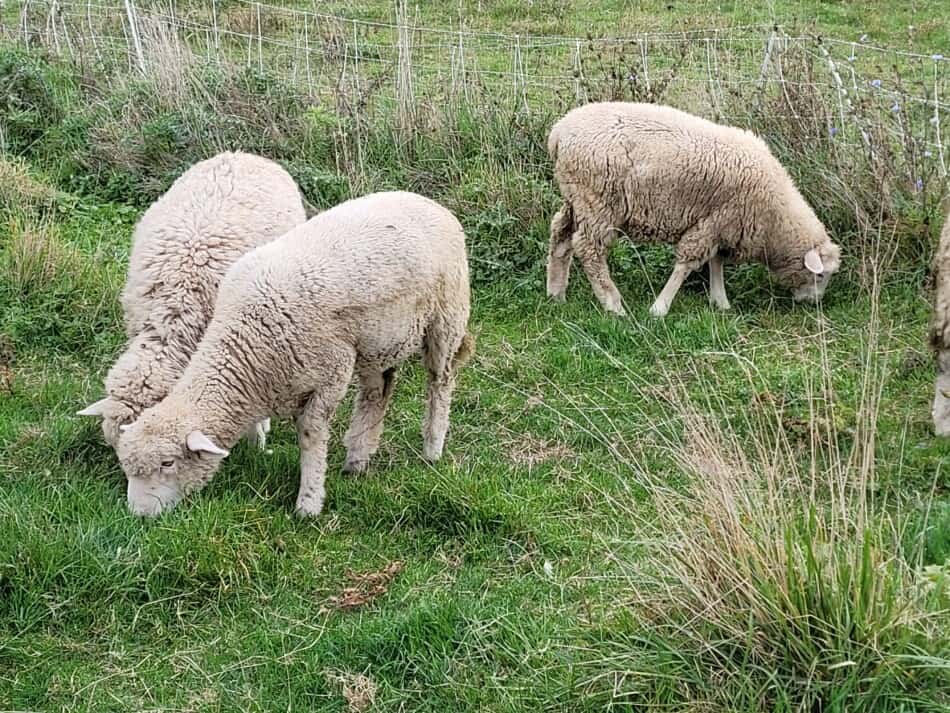
What if you are not feeding hay to your sheep?
You have some other options of what to feed your sheep, but keep in mind sheep are ruminants so the main portion of their diet needs to be forage, like grass or hay, for their digestive system to work well.
I started this article with hay feeding, since it is easier to measure and understand, but many sheep farmers feed something other than hay, most commonly grass.
If you were to feed a bit of grain, pellets or give them some pasture they would need less hay. Depending upon your situation, pasture or lawn grazing may be the more economical option, but not always.
Backyard Sheep is an article I wrote to give you some ideas on how to work grazing sheep into your situation, even if you just have a yard.
Grass tends to be more economical than hay or grain
Most folks with sheep would be feeding them on grass for a good portion of the year. Sheep love grass and, as long as you keep the parasite situation under control, can do well on grazing alone.
Generally, grass is the most economical feed for sheep, but, like most things with livestock, this is dependent upon your situation.
We feed our flock grass for the grazing season, which is generally mid April through mid to late November and give hay the rest of the year.
We could feed grain daily or have the flock inside and buy all of their feed, but for us, the option to have the flock on pasture for at least half the year is what works best for us with our current resources.
We could also rent land, move, or reduce flock numbers, all of these are potential options. Take some time and think of what you have available for your sheep and pencil out what makes the most sense.
What Can Sheep Eat Other Than Grass? is another of my articles written to help you see the potential feed resources you have that you may have overlooked or could economically start using for your flock.

Sheep facilities need maintained
The facilities you use to look after your sheep will add to your yearly costs of keeping sheep, as well.
Do you need to buy some cattle panels to keep the sheep out of the flowerbeds or get a gate to section off part of the shed?
What you’ll pay depends greatly on what you already have and how much more extensive you need the facilities to be.
For us, the facilities maintenance costs are more like replacing electric netting or getting another water trough, which are generally small expenses since we have most of the sheep appropriate things already.
Flock medical care costs
You will have some sort of medical or health care costs involved with your sheep. It could be buying a jug of dewormer or a vet visit, but plan on something.
When you are new, it will take you some time to learn what you can handle yourselves and what requires outside help. Plan on a vet visit or two until you get more experience with your flock.
Shearing needs done each year
If your sheep are wool sheep, you’ll need to plan in a cost of shearing, as well. Costs for shearing vary widely, based on how far the shearer has to come to you and how many sheep you have.
If you just have a few sheep, shearing will be costly. Call around and see what other sheep folks in your area are doing. Maybe their shearer can stop by your place on the trip, as well.
This is what our shearer does. He spends two days here, then each night does a small job or two, since he is in the area anyway.
When To Shear: Some things to consider will give you the scoop on planning in your shearing appointment based on fitting shearing time into your farm schedule.
Sheep will cost you in time spent caring for them
Another area enthusiastic folks tend to overlook is that sheep will cost you time, as in the time to work with them everyday. To be clear, sheep are pretty easy to take care of, but you still have to do it.
Do you have an extra 30 minutes to an hour everyday when you are looking for something to do? Can you find that time twice a day, 365 days per year, when you are sick, when the weather is bad, etc.?
Here’s an easy test for you regarding how you spend your day: how is your dog? I would guess that you were not expecting that question, but stick with me here.
Do you spend plenty of time with him? Do you enjoy your daily dog walks or do you feel like your dog and maybe a few other things are being neglected since you have a zillion things to do each day?
Adding sheep to the mix will not make your time commitments more manageable, more like the opposite!
Make sure you have the time you are happy, not just willing, but happy to spend with the sheep. They need you and since your time is the most valuable resource you have, think this one over carefully.
Feedstuffs For Sheep And Lambs is a Sheep 201 article that will go over more of your feeding options. If you have the time, click around on this site, there’s a ton of information here!
